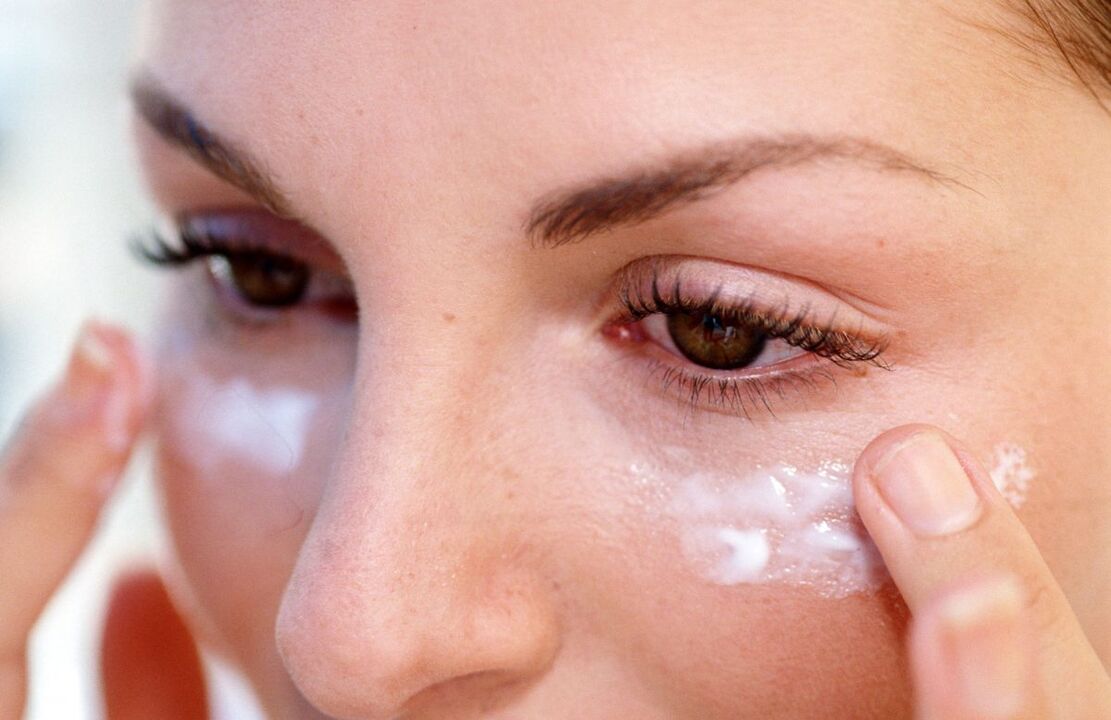Scientists have shown that when we look at a person, an animal, or even an image of them, first of all, we can't help looking into their eyes. When looking at a person, we quickly glance at his lips, nose, hair, but always return to his eyes. The eyes express the full range of human emotion. Everything matters - the lumen of the pupil, the shape of the eye, the position of the eyelids and eyebrows, the presence of wrinkles - the "light" around the eye, the absence of red streaks on the "white" of the eye, the brightness of the color of the "iris". Also, the area around the eyes is a sign of a person's age.

From an expert's point of view, the problems in this area can be divided into:
- decreased skin elasticity
- wrinkles around the eyes
- Puffiness and dark circles
- The "nasolacrimal groove", one of the most "relentless" manifestations - the groove that runs obliquely along the cheek from the inner corner of the eye, appears due to age-related displacement and sagging of the skin,
- upper and lower eyelid hernia
Who is the culprit and what to do
Almost all eye problems begin with a decrease in the skin's elastic properties. The skin begins to "slip", the border between the eye socket and the cheek moves downward, and the eye starts to look older as the soft tissue no longer covers the lower edge of the eye socket, it is only covered by the stretched eyelid.
important! It is necessary to "capture" this process from the beginning to prevent the skin, which can only be tightened surgically, from moving down too much. A preventive course is necessary to strengthen the facial muscles and increase the elasticity of the skin around the eyes. Often, experienced estheticians do not develop "straightforward" courses, but use a combination of techniques, and the choice of technique is often based on the current condition of the patient's skin. If you're over 25, be sure to see a esthetician who will create a personalized anti-aging regimen for you based on the genetic characteristics of your face. Some people are threatened with hernias, some people have dark brown circles around their eyes, and some people have what is called a "premolar pocket". An experienced beautician will immediately spot your "weaknesses" and advise you on what to look for. The common misconception that "the later you get to the beautician, the better" is fundamentally wrong, so many people miss the opportunity to prevent the aging of the face and eyes.
Problems and Solutions
Some of these defects (eg, hernias of the upper and lower eyelids) can only be managed by a surgeon. But most of the remaining problems can be solved by a beautician.
Remove wrinkles around the eyes with Botox or Dysport injections. For those prone to edema, hardware aesthetics (microcurrent) must be performed before using them, as well as mesotherapy aimed at improving blood and lymphatic circulation.
Using a comprehensive regimen of hardware aesthetics, chemical peels, mesotherapy and bioactivation helps increase skin elasticity and remove unwanted hyperpigmentation, swelling and fine superficial wrinkles. Mesotherapy differs from bioactivation in the formulation used: in bioactivation, it is hyaluronic acid with larger molecules, which allows it to stay in the skin longer and have a more pronounced regenerative effect. The procedure of alternating bioactivation and exfoliation procedures provides excellent results in rejuvenating the skin of the eyes. It is best to use preparations specially designed for the area around the eyes, which increases the effectiveness of the procedure and makes them as physiological as possible.
A full course consists of alternating four peeling procedures and four biological regeneration procedures (hyaluronic acid preparation) with a one-week interval between them.
The exfoliating ingredients include a combination of acids for dramatic depigmentation and rejuvenation. They are used in small concentrations, which reduces the risk of irritation, but achieves the desired effect by summarizing the action of the two acids. In the production of peels, a technique of "gradual release" of the active substance is used. After surgery, peeling is usually small and insignificant. It starts around day 2 and ends 4-5 days after the first procedure, and goes faster after repeated procedures.
Bioactivation is performed every other week after peeling. The ideal option is to use a hyaluronic acid formulation, which is designed to treat sensitive areas while minimizing the risk of swelling. The drug is administered in large "drops" that significantly reduce skin trauma.
Oxygen-ozone therapy will help smokers and people who are almost never outdoors. It refreshes the face, improves skin elasticity, and the eyes become radiant and clear.
Microcurrent treatment for patients with "bags under the eyes" can strengthen the skin and reduce congestion. Results are noticeable after 2-3 surgeries, but for lasting results it is recommended to visit 10-15 surgeries 2-3 times a week.
The hyaluronic acid-based gel will help fill the deep nasolacrimal groove, visually "hiding" the hernia. This procedure is one of the most effective because it is performed quickly, with little pain, and filling the nasolacrimal trough can actually "rejuvenate" the face for years before our eyes.
Where to start?
A proper eye rejuvenation program should begin with the restoration of skin quality (mesotherapy and peels) and end with the introduction of Botox and hyaluronic acid gel. In the absence of ocular edema, the introduction of botulinum toxin is a possible "debut". When preparing for plastic surgery, it is also desirable to use cosmetic techniques for treatment preparation. This will significantly improve the postoperative course and significantly reduce the likelihood of complications. It is also important to choose products that are suitable for home use and everyday use.
In conclusion, we note that we should not forget the most effective ways to rejuvenate the area around the eyes: good sleep, fresh air and no bad habits.
























